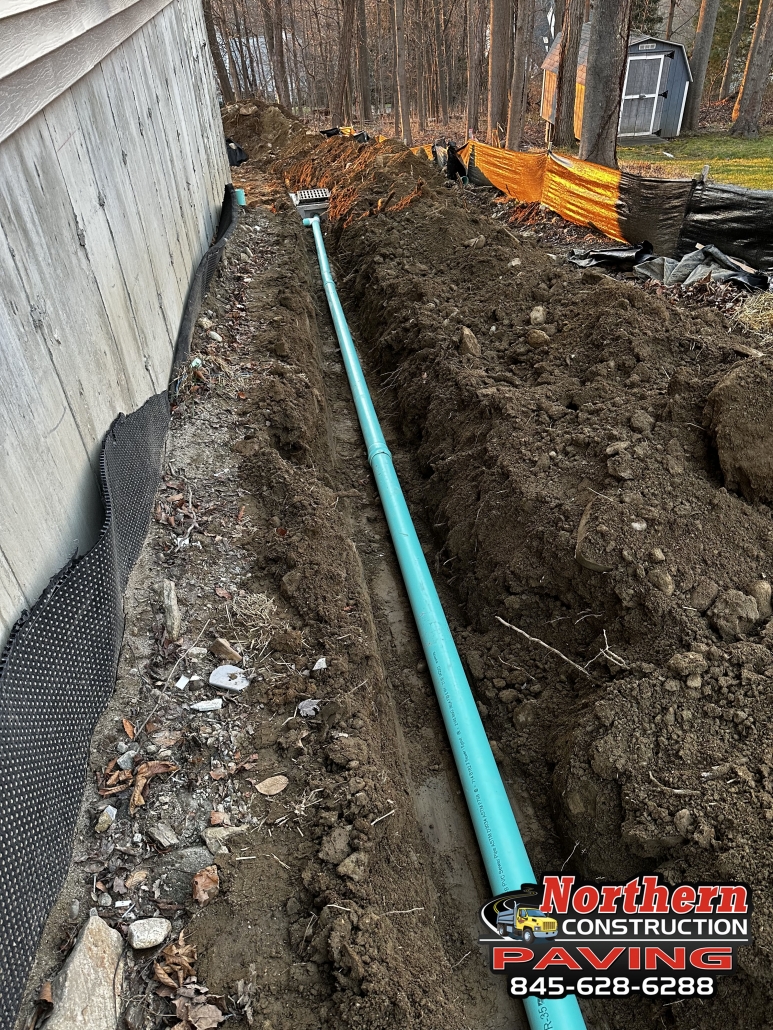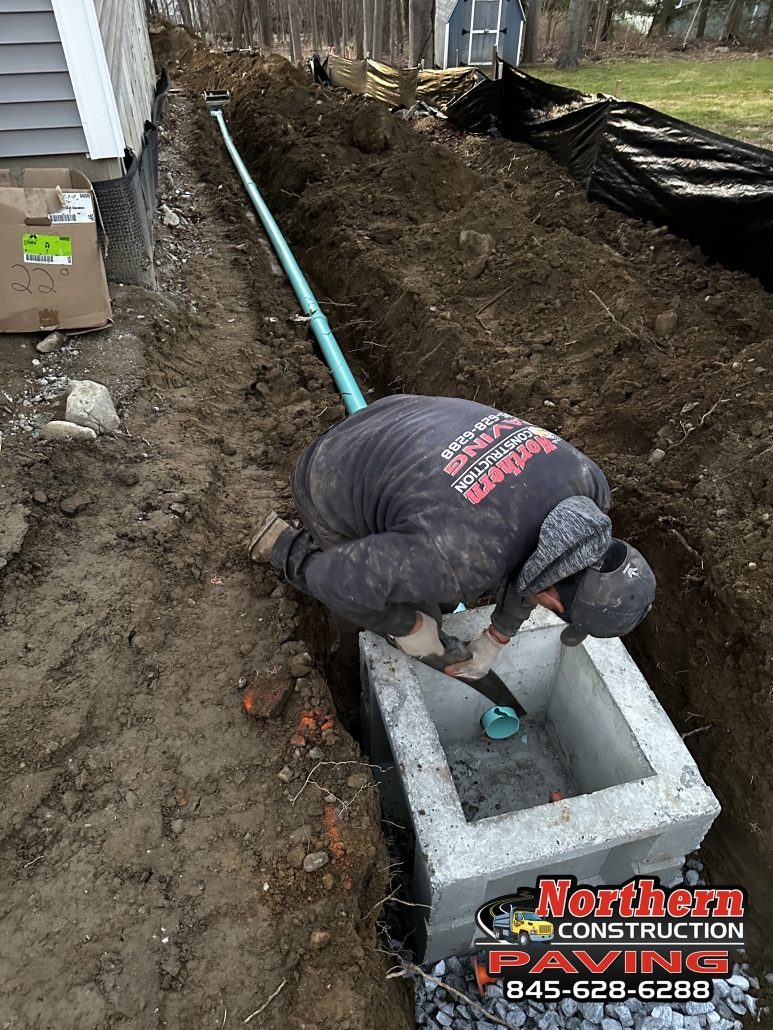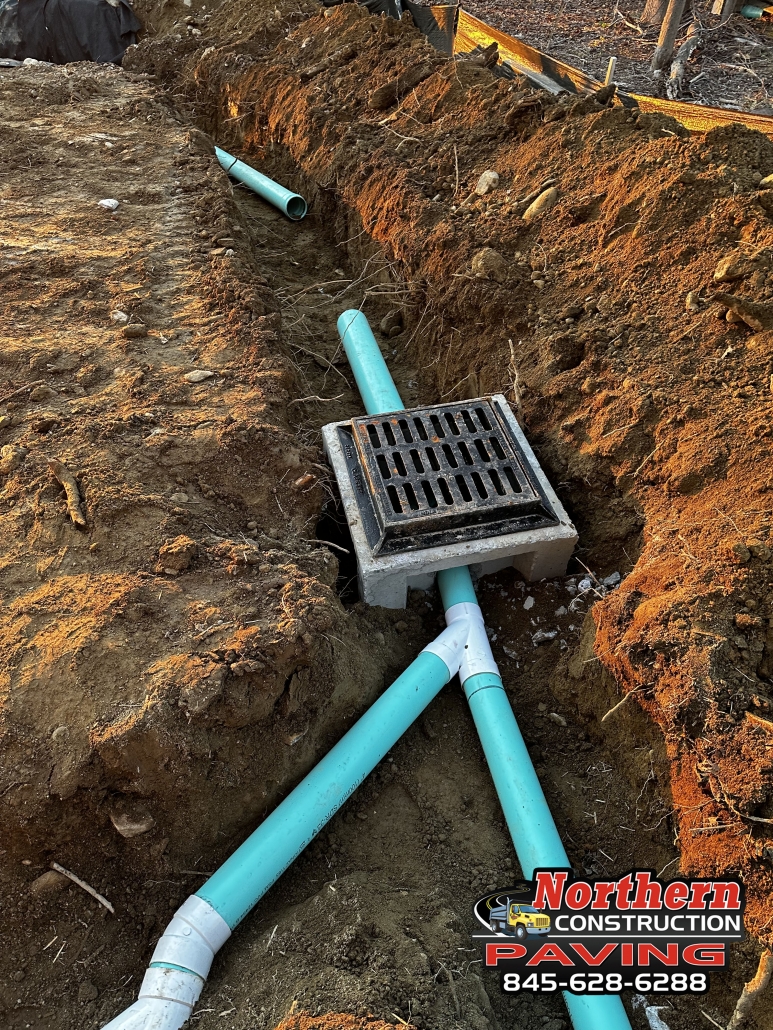Water Runoff Can Cause Damage
If you’re a New York state resident, you’re already aware of the tremendous rainfall the state received this year. Both Westchester and Putnam Counties saw record-breaking flooding. As a result, there were major losses for both property and roadways. Over 10 inches of rainfall was recorded in Westchester County alone! Many residents who didn’t have drainage solutions for their gutters or driveways were in for a rude awakening. The flooding caused drainage systems to fail that may have worked effectively for years. Homeowners who didn’t have their gutters piped underground had their backyards washed out. It’s very common when we receive a call to replace an old drainage system that the current system is already compromised. It may be clogged or doesn’t have enough pitch to move the water. For example, a trench drain filled with debris and sediment won’t work as effectively and cause water to pool inside. A drain that was installed 20 years ago over time may eventually fail for a variety of reasons. It could be the materials that were used during the installation, not enough pitch to move the water at a steady rate, etc. Therefore, in preparation for the next disaster assess the current state of your home’s drainage. If you have gutters on your house or a trench drain in your driveway a catch basin can help hold and relocate rain water. Here’s why you should consider plumbing your gutters or trench drain into a catch basin
Plumbing your Gutters Or trench Drain Into A Catch Basin
Catch basins are designed to collect rainwater from one or more sources. They hold water temporarily and then route it towards low ground where it can exit your property. If you decide to have a catch basin installed on your property, here are a few important things to remember. The location of the basin is very important. It needs to sit in the path where large volumes of water travel to be effective. One of the most common locations to place one is the lowest point in your driveway. Most of the time this is generally somewhere near the turn around, where cars back in and out of the garage. Plumbing gutters or a trench drain into a catch basin isn’t mandatory. But if your home is at the bottom of a hill, remember water is constantly traveling downwards. The best thing would be to allow the water to continue to travel away from your home instead of pooling on your property. Most catch basins are square-shaped and made of concrete as shown in the photos above. They have a frame and grate that sits on top. This allows water to flow into the basin from above. The grate of the catch basin should sit slightly below the finished grade of the ground. If it is slightly above grade, water may pool in front of the basin. To plumb gutters or a trench drain into a basin holes need to be made on the side. A pipe can then be inserted inside the basin which can then be routed from your gutters or trench drain. We generally use 4″ green pipe to connect into the basin which will also connect to your trench drain or gutters. After the pipe has been installed, cement is added to close up any openings around the pipe to prevent dirt from entering the basin.





